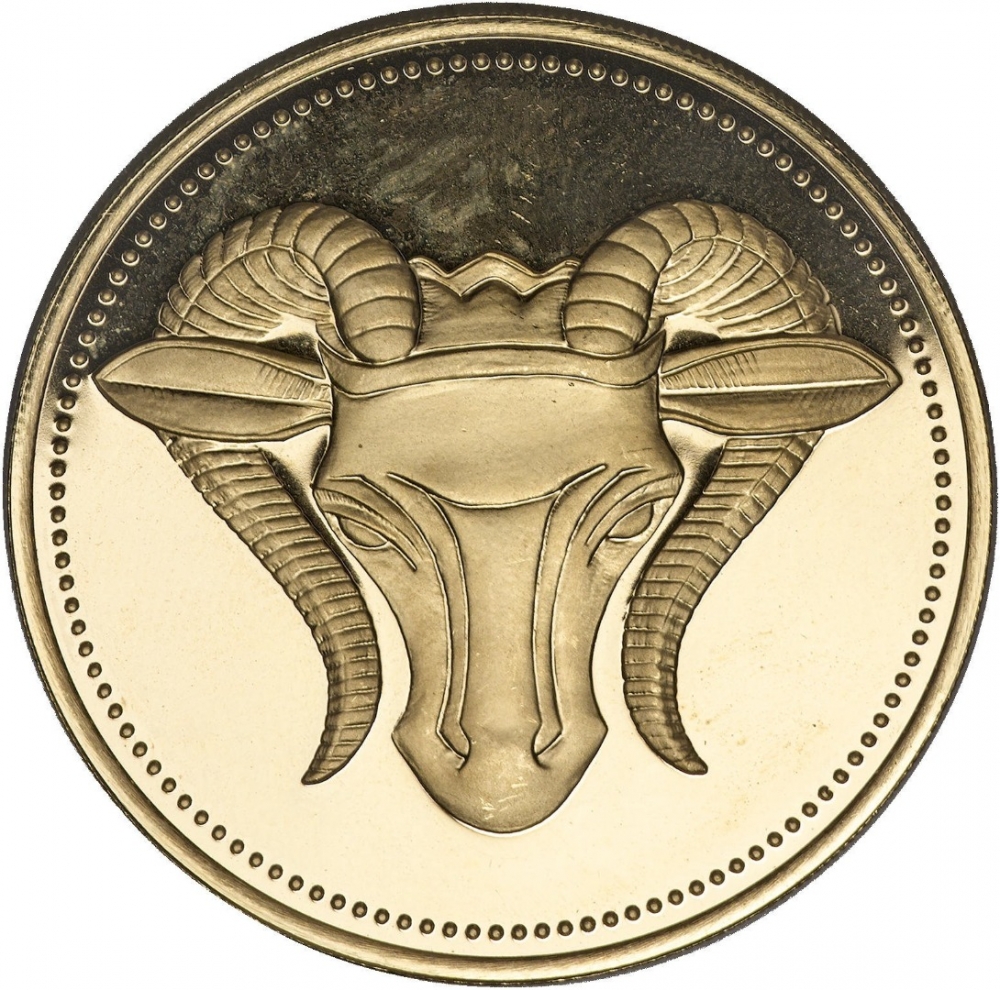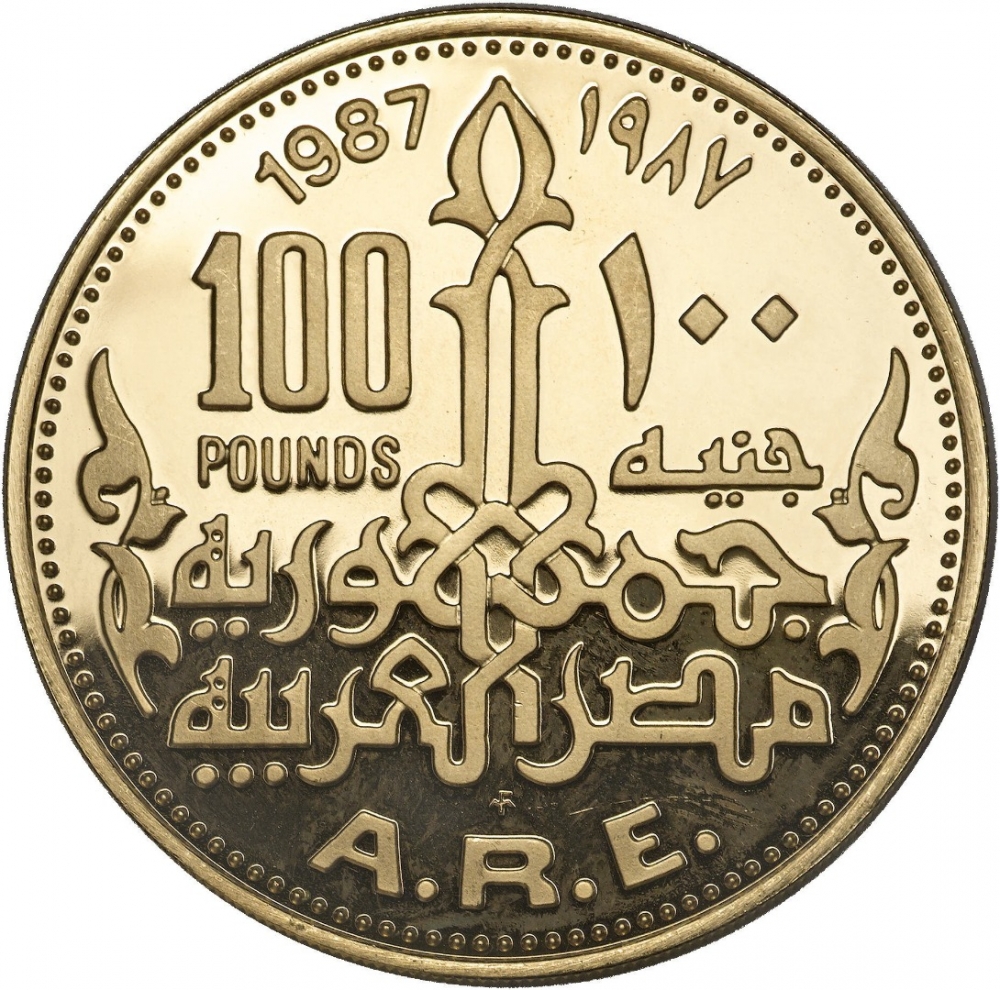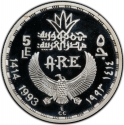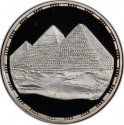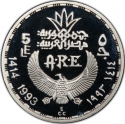You are about to finish your registration. Please check your mailbox (including spam folder). There should be a letter with a confirmation link. Check setting to make sure that your e-mail address is correct.
Send letter againDescription
Golden Ram's-head Amulet (ca. 712–664 B.C., Third Intermediate Period, now in the Metropolitan Museum of Art) was probably made for a necklace worn by one of the Kushite kings. Representations show these pharaohs wearing a ram's-head amulet tied around the neck on a thick cord, the ends of which fall forward over the shoulders. Sometimes a smaller ram's head is attached to each end. Rams were associated with the god Amun, particularly in Nubia, where he was especially revered.
Obverse

|
Depicts the Ram's-head Amulet. |
|---|---|
Reverse

|
Stylized state name (Arab Republic of Egypt) divides denomination in Arabic and English as well as the date in Arabic (Hijri) and Western (Georgian) calendars. Mintmark (FM) and abbreviation of state name (ARE) below. 1987 ١٩٨٧ |
| Edge |
100 Pounds
Pharaonic Treasure / Ancient Egyptian Art
Golden Ram's-head Amulet
Subscribe series
KM# 613
Pharaonic Treasure / Ancient Egyptian Art
Golden Ram's-head Amulet
